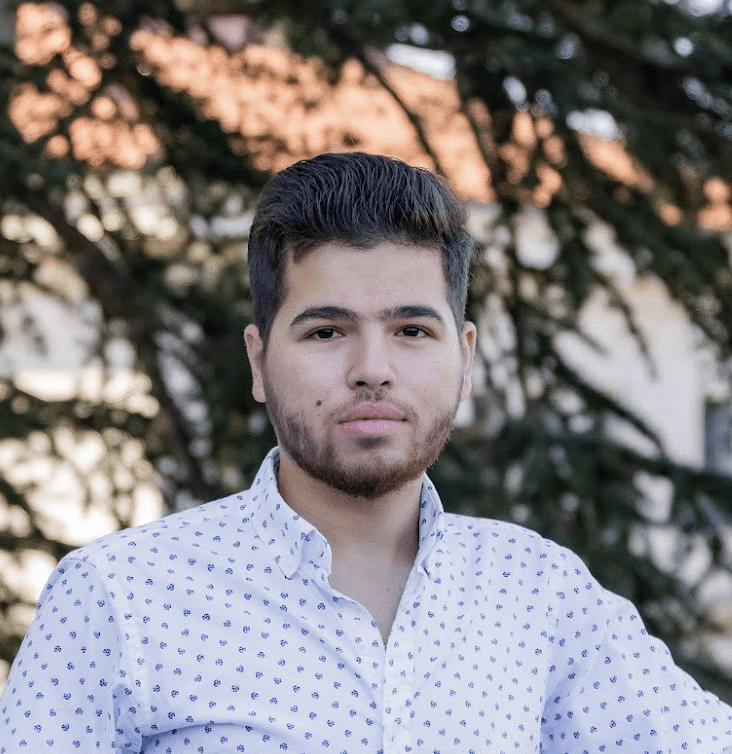Samer Bahu

This research project focuses on how people attribute blame in patient-physician miscommunications, aiming to uncover biases and expectations that shape how individuals assign blame. By investigating how observers and patients themselves attribute blame, particularly towards physicians as primary communicators, the study sheds light on the consequential context of miscommunication in healthcare. Exploring interventions to reduce miscommunication, such as encouraging proactive communication from patients, the study endeavors to enhance patient-centered care and optimize healthcare communication practices. Ultimately, its goal is to foster more effective patient-physician interactions and improve patient outcomes.
Touss Majidi

I will be testing designed transcriptional activation domains for plant synthetic biology using experimental and computational techniques. The experimental work largely revolves around integrating plasmid libraries into the yeast genome, sorting the cells, and generating next generation sequencing libraries. The computational aspects of the project include analyzing the resulting data, assessing the number of integrations in each experiment, and simulating highly active synthetic activation domains.
Kailyn Jackson

This project aims to address the significant disparity in maternal mortality rates among Black birthing people in the US, with a particular focus on California. Data from the CDC reveals that Black birthing people are three to four times more likely to die during and after pregnancy in the US. Through in-depth interviews and design workshops, we seek to identify specific needs and challenges faced during the postpartum period and brainstorm innovative solutions to improve postnatal care. This summer, my role will involve coding and analyzing the obtained interviews, as […]
Ian Mitchell

The Phoebe A. Hearst Museum of Anthropology stewards an extensive collection of material culture, folklore, and anthropological documentation. As a URAP Summer Fellow, I will be responsible for organizing and cataloguing previously undocumented accessions at the Hearst Museum’s off-site storage facility. More broadly, I hope to foster public accessibility through the production and circulation of research aids.
Khushi Kethana

I study how the intrinsic pacemaker region of the heart, the sinoatrial node (SAN), develops by mapping out the lineage of pacemaker progenitor cells in embryonic mouse hearts. A drug-activated enzyme puts together the front and back ends of fluorescent genes (that were previously inserted into the mouse line) during mitosis, the process in which body cells divide and replicate. If the front and back ends of the fluorescent genes are successfully put together in a cell, that cell fluoresces and all of its progenitors will fluoresce. Thus we can […]
Kiely Bol

Individuals with Parkinson’s disease experience nerve degeneration in the basal ganglia, a region of the brain responsible for both motor and non-motor functions. It is believed that Parkinson’s disease impairs the ability to learn and adapt skilled movements, such a visuomotor adaptation. Since there are multiple learning processes involved in motor learning, the goal of this project is to isolate explicit re-aiming (the conscious and strategic adaptation to a task) and to understand the basal ganglia’s involvement in this specific learning process. This summer, I will continue collecting data for […]
Natalie Tang

Transcription factors (TFs) are proteins that bind to specific DNA sequences to regulate gene expression, impacting cell function, differentiation, and development. Isolation of TFs is a common practice in many research studies, and my goal this summer is to optimize an alternative approach that combines Halo-Tag and ChIP, two preexisting isolation protocols, for greater efficiency. By combining elements of both systems and engineering a new protein that forms covalent bonds with minimal loss of transcription factors, I aim to isolate TFs with enhanced accuracy for further research.
Pranav Kolluri

High Resolution Peripheral Quantitative Computed Tomography, or HR-pQCT, is a medical imaging technique used to assess the architecture of the of the cortical and trabecular bone. Our lab, the Bone Quality Research Laboratory, uses this imaging technique in addition to MRIs to better understand how bone structure changes with disease. Typically, at the time of image capture, the operators have to manually (and subjectively) “score” if the scan has been impacted by motion artifacts. My work focuses on automating the scoring process of HR-pQCT capture via deep learning on a […]
Hani Liu

At the Rijo-Ferreira Lab, we carry out research on malaria parasites, endeavoring to understand how they keep time. One of the hallmarks of the malaria disease is its rhythmic fevers, making our research relevant to the development of circadian medicine, such as methods of time-of-day drug administration. Specifically, this summer, I will investigate how sporozoite-stage (the stage found in the mosquito) malaria parasites’ motility, gene expression, and invasion efficiency into liver cells vary at different times of the day.
Adriana Temprano

This project contributes to the Civil Justice Research Initiative at Berkeley Law, a think-tank that involves multidisciplinary empirical research on access to legal justice. Our work will include sociological and public health research on racial trauma cases, such as those involving police brutality. The resulting paper will be submitted for publication as a chapter in a forthcoming edited collection for the Elgar Research Handbooks in Law and Society Series. Additionally, a white paper will be written for research conducted on post-distribution accounts tracking the outcomes of class action litigation. The […]